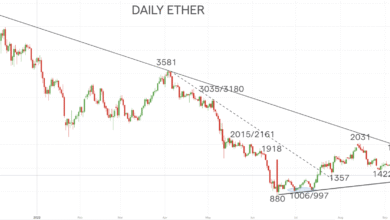Federal Reserve Bank Regulations: New Definition Proposed

Federal Reserve bank regulations are set to undergo significant changes aimed at redefining what constitutes a “well-managed” bank. With the latest proposal allowing financial institutions with a single “deficient” rating to maintain this coveted status, the Fed is shifting the landscape of banking oversight. This initiative has sparked lively discussions among industry experts and regulators regarding its implications on banking stability and the overall management standards required of these institutions. Critics, including former Fed officials, have raised concerns about potential adverse impacts on financial robustness and the riskiness of operations. As the Fed seeks commentary on this proposal, stakeholders are closely examining how these banking regulation changes may reshape the future of financial institutions oversight.
The banking industry is witnessing a fascinating evolution as the Federal Reserve explores new frameworks for assessing financial health and governance. By revising the standard for a “well-run” financial entity, the Fed’s pursuits aim to balance stringent oversight with the pragmatic realities faced by banks today. This reform comes at a time when many are questioning the adequacy of existing rules and their applicability to contemporary banking challenges. Such regulatory transformations could unleash significant alterations in how institutions are monitored and managed, given the nuanced definitions they adopt. Stakeholders are now tasked with evaluating how these developments may influence the stability and resilience of the banking ecosystem at large.
Impact of Federal Reserve Bank Regulations on Risk Management
The Federal Reserve bank regulations play a crucial role in shaping the landscape of risk management within banking institutions. By adjusting the criteria for what constitutes a ‘well-managed’ bank, the Fed’s recent proposals introduce a new paradigm in financial oversight. Regulations that formerly demanded a pristine rating across all areas—capital, liquidity, and governance—are evolving to accept banks with certain deficiencies, fundamentally altering the risk landscape. This shift not only reflects the Fed’s desire to recognize the overall health of financial institutions but also raises concerns about the potentially adverse impact on banking stability if overlooked deficiencies become normalized.
By easing the standards for well-managed banks, there is a possibility that institutions might become complacent regarding their governance and controls. Regulatory frameworks exist to prevent systemic risks from materializing; thus, any governance relaxation might undermine these safeguards, leading to a detrimental effect on the financial system’s resilience. Critics like former Vice Chair Michael Barr have voiced substantial concerns that the proposed changes could introduce additional risks, suggesting that the Fed’s push for adaptability may inadvertently contribute to an unstable banking environment.
Assessing Bank Health Under New Definitions
As the Federal Reserve proposes redefining what it means to be a well-managed bank, the implications for financial institutions oversight could be profound. By allowing banks to maintain the well-managed designation even with a single deficient rating, the Fed appears to be championing a more flexible approach to bank health. Supporters argue that this could enable banks to address performance deficiencies without the harsh penalties previously associated with such ratings, thereby encouraging a more thoughtful evaluation of their overall condition beyond mere compliance with rigid standards.
However, this flexibility comes with significant risks that need careful consideration. Opponents of the proposal warn that the new definition could dilute the urgency for banks to rectify deficiencies, leading to potential long-term deterioration in governance standards. The essence of financial oversight is to maintain a robust banking system capable of weathering economic downturns and crises, and any deviation that allows for the acceptance of lesser standards could threaten this stability. Thus, while the aim is to foster a healthier financial environment, the foundations of regulatory scrutiny must remain solid to prevent future pitfalls.
Response to Fed Proposal: A Divided Opinion Among Experts
The recent Fed proposal has sparked a divided opinion among industry experts, particularly regarding its implications for banking regulation changes. While some view this move as a progressive step towards accommodating variances in bank performance and acknowledging broader operational health, others warn that it could lead to significant risks in governance standards. Former Fed Vice Chair Michael Barr has strongly criticized easing the well-managed bank criteria, suggesting that it directly threatens the safeguards that have been put in place to ensure stability within the banking sector.
In the discussions around this proposal, the need for constructive commentary and expert feedback is paramount. The idea is to create a balance between adapting to current banking realities while not compromising on core safety regulations. As debates unfold, it’s essential to examine how these changes will impact existing frameworks for financial institutions oversight and assess the long-term implications on the core principles that define a stable, well-regulated banking environment.
Potential Consequences for Banking Stability
In light of the Fed’s relaxed approach to defining a well-managed bank, concerns regarding the adverse impact on banking stability are rising among financial analysts and regulators alike. A critical aspect of banking stability hinges upon the rigorous enforcement of governance and risk management standards. Allowing institutions to operate with deficiencies could create a slippery slope where the importance of sound practices is diminished, potentially eroding the very foundations of trust that underpin the financial system.
The stability of the banking sector is not solely dependent on capital adequacy but is significantly influenced by governance quality and operational rigor. Critics of the Fed’s proposal contend that redefining what constitutes a well-managed bank could inadvertently create a hazardous environment, encouraging institutions to prioritize short-term performance over long-term resilience. This line of reasoning underscores the tension between regulatory flexibility and the fundamental need for a robust and alert banking oversight framework that minimizes systemic risk.
Redefining ‘Well-Managed’: What It Means for Banks
The Federal Reserve’s initiative to redefine what constitutes a ‘well-managed’ bank represents a significant transformation in banking regulation dynamics. At its heart, this shift is aimed at recognizing the multifaceted nature of a bank’s health, emphasizing that overall condition can outweigh isolated deficiencies in governance or capital. This nuanced understanding could provide banks with the room they need to operate more effectively within evolving market pressures, while still managing risk appropriately.
Nonetheless, this new definition raises pivotal questions about the integrity of banking standards. If banks can be labeled as well-managed despite facing challenges, they might gain access to privileges such as acquisition capabilities that could risk extending their operational reach without adequate oversight. Hence, while the motive appears constructive, it is critical to monitor and evaluate the practical outcomes of this regulatory shift, ensuring that the essence of banking regulation remains intact and aligned with the long-term stability of the financial system.
The Role of Governance in Banking Regulation Changes
At the core of the Fed’s banking regulation changes lies the fundamental importance of governance in determining the viability of a financial institution. Governance frameworks are essential as they dictate how decisions are made, risks are managed, and accountability is maintained within banks. As the Fed suggests accommodating deficiencies into the well-managed status for banks, there arises a concern about whether governance will be treated with the seriousness it deserves in oversight processes.
Effective governance is essential for maintaining the integrity of financial institutions, and any shift that appears to undermine this aspect can lead to wider ramifications for the banking landscape. Regulators need to ensure that governance remains a priority in their juxtaposition of flexibility and accountability. Therefore, while the changes proposed by the Fed may be intended to provide leeway for banks, it is vital that the stability afforded by stringent governance standards is not compromised in the process.
Navigating Risks in Financial Institutions Oversight
As financial institutions navigate the evolving landscape of regulations posed by the Federal Reserve, the balance of risk must be a core consideration. The new criteria that might classify a bank as well-managed even with certain deficiencies creates a complex environment that requires nimble oversight mechanisms. Stakeholders in the banking community must remain vigilant about potential risks that could surface as a result of adapting regulations to encompass a wider array of operating conditions.
Moreover, with regulators contemplating these changes, there is a growing need to develop robust frameworks that can adapt while still upholding essential safety measures. The dialogue surrounding the Fed’s proposals highlights the imperative to learn from past regulatory shortcomings and to implement effective risk assessment strategies moving forward. Only by prioritizing comprehensive oversight can we hope to maintain a stable banking system that is capable of withstanding economic fluctuations.
Sustaining Banking Stability through Effective Oversight
In an effort to sustain banking stability amid changing regulation parameters, financial authorities must harness effective oversight capabilities. The Federal Reserve’s proposal to redefine well-managed banks amidst evolving economic realities requires a keen eye on potential dynamics that may arise. A strong oversight framework is vital to ensuring that protections remain intact against the backdrop of more lenient standards, thus preserving the integrity of the banking system.
To achieve this balance, regulators must closely examine the implications of any changes on financial stability, particularly as they relate to systemic risk and governance practices. Stakeholders must advocate for a stable regulatory architecture that encourages responsibility, transparency, and resilience in bank operations. By embracing proactive oversight strategies, the Fed can ensure that changes to banking regulations bolster, rather than jeopardize, the financial soundness of banks.
Expert Commentary on Proposed Changes in Banking Regulations
Expert commentary plays a crucial role in shaping the discussion around the Federal Reserve’s proposed changes to banking regulations. As stakeholders weigh in, their insights offer invaluable perspectives on potential implications for banking stability and operational effectiveness. The interplay of opinions from industry veterans and regulators will forge a clearer understanding of how the new definition of ‘well-managed’ banks could impact the overall banking ecosystem.
There is an opportunity for the financial community to engage dynamically with these changes, evaluating the merits and pitfalls articulated by experts such as former Vice Chair Michael Barr and others who advocate for stringent oversight standards. The ongoing dialogue must be grounded in ensuring that any regulatory modifications contribute positively to financial institutions’ long-term health while addressing contemporary challenges in the sector. By emphasizing expert commentary, the financial community can navigate the complex landscape more effectively.
Frequently Asked Questions
What changes are being proposed in the Federal Reserve bank regulations regarding the definition of a ‘well-managed’ bank?
The Federal Reserve is proposing to change the definition of a ‘well-managed’ bank by allowing institutions with one ‘deficient’ rating in capital, liquidity, or governance to still be considered well-managed. This marks a shift from previous regulations that required banks to meet all standards to qualify.
How will the proposed changes to Federal Reserve bank regulations affect financial institutions oversight?
The proposed changes may alter financial institutions oversight by allowing banks to retain ‘well-managed’ status despite having a deficient rating. This could lead to increased risks within the banking system as the oversight framework becomes less stringent.
What are the implications of the Fed proposal commentary on banking stability?
The Fed proposal commentary suggests that relaxing definitions of ‘well-managed’ could have adverse impacts on banking stability. Critics argue that this approach may weaken safeguards designed to maintain a robust banking environment.
Why are some officials concerned about the banking regulation changes by the Federal Reserve?
Some officials, like former Vice Chair Michael Barr, express concern that the banking regulation changes could undermine essential safeguards. They argue that altering the well-managed concept may introduce greater risks to the overall banking system.
What criteria are used to determine whether a bank is ‘well-managed’ under the current Federal Reserve regulations?
Under current Federal Reserve regulations, a bank is determined to be ‘well-managed’ based on three criteria: capital adequacy, liquidity management, and governance controls. Meeting these standards is essential for a bank’s operational flexibility.
What are the potential risks of redefining ‘well-managed’ banks in the context of federal banking regulations?
Redefining ‘well-managed’ banks may lead to decreased accountability and oversight among financial institutions, increasing the likelihood of systemic risks and adversely impacting regulatory effectiveness in maintaining banking stability.
| Key Points | Details |
|---|---|
| Federal Reserve Proposal | Change in the definition of a ‘well-managed’ bank. |
| Deficient Ratings Allowed | Banks can have one ‘deficient’ rating and still be considered well-managed. |
| Criteria for Ratings | Based on capital, liquidity, and governance controls. |
| Previous Regulation Impact | 2018 rules prevented banks with deficiencies from meeting management standards. |
| Support for Proposal | Michelle Bowman supports easing of definitions to reflect overall condition. |
| Opposition to Proposal | Michael Barr and Adriana Kugler express concerns about risks to the banking system. |
| Recent Context | Proposal follows new capital rules for large banks, which faced similar objections. |
Summary
Federal Reserve bank regulations are undergoing significant changes with the latest proposal from the Fed aiming to ease restrictions on large financial institutions. This proposal modifies the definition of what constitutes a ‘well-managed’ bank, allowing institutions with one ‘deficient’ rating to still be considered properly managed. While this shift is seen by some, like Fed Vice Chair Michelle Bowman, as a pragmatic adjustment recognizing a bank’s overall condition, it has sparked strong opposition from former officials like Michael Barr, who argue that such changes may introduce unnecessary risks into the banking system. The ongoing discussions on bank management standards highlight a critical balance between regulatory oversight and the functional flexibility banks require to operate effectively.




